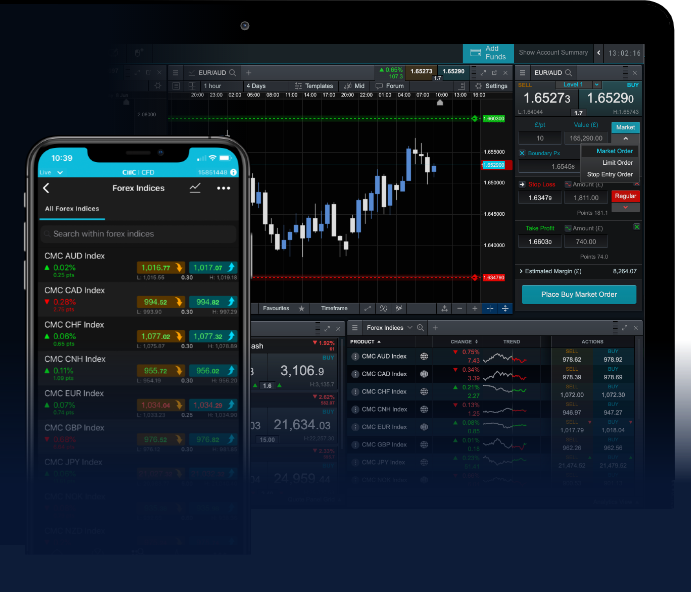
Leverage is a crucial concept in Forex trading that enables traders to control larger positions with a relatively small amount of capital. Understanding how leverage works and its implications on trading can significantly enhance your trading experience and profitability. For more insights, visit leverage in forex trading trader-apk.com, where you can find valuable resources to help you navigate the Forex market.
What is Leverage in Forex Trading?
At its core, leverage allows traders to amplify their position size relative to the margin they hold in their trading account. In Forex, the leverage ratio represents the amount of capital a trader can control for every dollar in their account. For example, a leverage ratio of 100:1 means that for every $1 a trader has, they can control $100 in the Forex market.
How Leverage Works
When you trade Forex, you need to deposit a margin, which is a fraction of the total value of your trade. This margin varies depending on the broker and the size of the trade. With leverage, you essentially borrow funds from your broker to increase your exposure in the market.
For instance, if you want to trade a standard lot (100,000 units) of EUR/USD at a price of 1.2000, the total value of your trade would be $120,000. If your broker offers 100:1 leverage, you would need to deposit only $1,200 as margin to open this trade. This powerful tool allows traders to amplify their profits, but it also includes the potential for significant losses.
The Benefits of Using Leverage
1. **Increased Profit Potential**: Leverage can significantly boost your potential returns. By controlling larger positions, even small fluctuations in currency pairs can result in substantial profits.
2. **Capital Efficiency**: With leverage, you can maintain a diverse portfolio without needing large amounts of capital tied up in each trade. This capital efficiency allows you to explore multiple trading opportunities simultaneously.
3. **Flexible Position Sizing**: Leverage enables traders to adjust their position sizes according to their risk appetite and market conditions. You can scale your trades up or down to suit your trading strategy.
The Risks of Using Leverage
While leverage has its advantages, it also comes with significant risks:
1. **Amplified Losses**: Just as leverage can magnify profits, it can also amplify losses. If the market moves against your position, you could incur substantial losses exceeding your initial margin investment.
2. **Margin Calls**: If your account equity falls below a certain level due to adverse market movements, your broker may issue a margin call, requiring you to deposit more funds or close your positions to maintain your account balance.

3. **Emotional Stress**: The potential for high rewards comes with the risk of emotional stress and decision-making under pressure. Many traders find it challenging to manage their emotions when dealing with high leverage.
Choosing the Right Leverage
The leverage you choose plays a vital role in your trading strategy. Factors to consider include:
1. **Trading Experience**: New traders may want to start with lower leverage to minimize risk while they learn. Experienced traders may feel comfortable with higher leverage, given their understanding of market dynamics.
2. **Risk Management**: Determine your risk tolerance and align your leverage accordingly. A lower leverage ratio can help limit potential losses and enable more robust risk management strategies.
3. **Market Conditions**: Consider the volatility of the currency pairs you’re trading. In more volatile markets, such as during major news releases, lower leverage can help you manage increased risks.
Best Practices for Using Leverage
To make the most of leverage while mitigating risks, consider the following best practices:
1. **Use Stop-Loss Orders**: Implement stop-loss orders to protect your account from significant losses. This will automatically close your trades at a predetermined level, helping you manage your risk.
2. **Start with Low Leverage**: Especially if you’re a beginner, start with lower leverage until you become comfortable with the mechanics of Forex trading and develop a solid trading strategy.
3. **Educate Yourself**: Continuous learning is vital in Forex trading. Educate yourself about market trends, trading strategies, and the impact of leverage on your trades. Utilize online resources, webinars, and demo accounts to practice your skills.
Conclusion
Leverage in Forex trading can be a double-edged sword. It offers traders the opportunity to maximize their potential profits, but also introduces heightened risk. To navigate these waters successfully, it’s essential to understand how leverage works, choose the right ratio for your trading style, and employ effective risk management strategies. Always remember, trading with leverage should be approached with caution and a well-thought-out plan.
For more information on Forex trading and leverage, or to access various trading tools, don’t hesitate to check trader-apk.com for additional resources.
